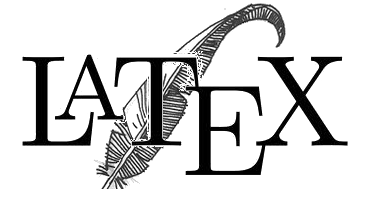TOURISM’S TREND RANKING ON SOCIAL MEDIA DATA USING FUZZY-AHP VS. AHP
Abstract
Keywords
Full Text:
PDFReferences
N. Delener, “Current trends in the global tourism industry: evidence from the United States,” Rev. Adm. Pública, vol. 44, no. 5, pp. 1125–1137, Oct. 2010, doi: 10.1590/S0034-76122010000500006.
S. Mukherjee, A. Adhikari, and B. Datta, “Quality of tourism destination – a scale development,” J. Indian Bus. Res., vol. 10, no. 1, pp. 70–100, Feb. 2018, doi: 10.1108/JIBR-07-2017-0104.
J. Simumba and W. Nchito, “Customer engagement in tourism and hospitality services in Kasama and Shiwa Ng’andu, Zambia,” African J. Hosp. Tour. Leis., pp. 1–14, 2018.
B. Aziri and A. Nedelea, “Business strategies in tourism,” Ecoforum J., vol. 2, no. 1, pp. 5–11, 2013.
A. Frias, J. Cabral, and Á. Costa, “Logistic optimization in tourism networks,” 55th ERSA Congr. World Renaiss. Chang. roles people places, Libanon, Port., 2015.
X. Font and T. E. Ahjem, “Searching for a balance in tourism development strategies,” Int. J. Contemp. Hosp. Manag., 1999.
S. Renjith, A. Sreekumar, and M. Jathavedan, “Evaluation of Partitioning Clustering Algorithms for Processing Social Media Data in Tourism Domain,” in 2018 IEEE Recent Advances in Intelligent Computational Systems (RAICS), Dec. 2018, pp. 127–131, doi: 10.1109/RAICS.2018.8635080.
H. Konu, “Identifying potential wellbeing tourism segments in Finland,” Tour. Rev., 2010.
D. R. Swaramarinda, “The Usefulness of Information and Communication Technology in Entrepreneurship Subject,” J. Entrep. Educ., vol. 21, no. 3, pp. 1–10, 2018, [Online]. Available: https://www.abacademies.org/articles/the-usefulness-of-information-and-communication-technology-in-entrepreneurship-subject-7341.html.
A. Hausmann et al., “Social Media Data Can Be Used to Understand Tourists’ Preferences for Nature-Based Experiences in Protected Areas,” Conserv. Lett., vol. 11, no. 1, p. e12343, Jan. 2018, doi: 10.1111/conl.12343.
C.-F. Chen, “Applying the Analytical Hierarchy Process (AHP) Approach to Convention Site Selection,” J. Travel Res., vol. 45, no. 2, pp. 167–174, Nov. 2006, doi: 10.1177/0047287506291593.
V. Wickramasinghe and S. Takano, “Application of Combined SWOT and Analytic Hierarchy Process (AHP) for Tourism Revival Strategic Marketing Planning:,” J. East. Asia Soc. Transp. Stud., vol. 8, pp. 954–969, 2010, doi: 10.11175/easts.8.954.
G. Fan, E. D. Goodman, and Z. Liu, “AHP (Analytic Hierarchy Process) and Computer Analysis Software Used in Tourism Safety,” J. Softw., vol. 8, no. 12, Dec. 2013, doi: 10.4304/jsw.8.12.3114-3119.
R. Law, S. Qi, and D. Buhalis, “Progress in tourism management: A review of website evaluation in tourism research,” Tour. Manag., vol. 31, no. 3, pp. 297–313, Jun. 2010, doi: 10.1016/j.tourman.2009.11.007.
A. M. Morrison, J. S. Taylor, and A. Douglas, “Website Evaluation in Tourism and Hospitality,” J. Travel Tour. Mark., vol. 17, no. 2–3, pp. 233–251, Feb. 2004, doi: 10.1300/J073v17n02_18.
B. Plaza, “Google Analytics for measuring website performance,” Tour. Manag., vol. 32, no. 3, pp. 477–481, Jun. 2011, doi: 10.1016/j.tourman.2010.03.015.
R. Rashmi, R. Singh, M. Chand, and S. Avikal, “An MCDM-Based Approach for Selecting the Best State for Tourism in India,” Yadav, N., Yadav, A., Bansal, J., Deep. K., Kim, J. Harmon. Search Nat. Inspired Optim. Algorithms. Adv. Intell. Syst. Comput., pp. 17–26, 2019, doi: 10.1007/978-981-13-0761-4_2.
X. Wang, X. (Robert) Li, F. Zhen, and J. Zhang, “How smart is your tourist attraction?: Measuring tourist preferences of smart tourism attractions via a FCEM-AHP and IPA approach,” Tour. Manag., vol. 54, pp. 309–320, Jun. 2016, doi: 10.1016/j.tourman.2015.12.003.
G. I. Alptekin and G. Büyüközkan, “An integrated case-based reasoning and MCDM system for Web based tourism destination planning,” Expert Syst. Appl., vol. 38, no. 3, pp. 2125–2132, Mar. 2011, doi: 10.1016/j.eswa.2010.07.153.
Tundo and S. Saifullah, “Fuzzy Inference System Mamdani dalam Prediksi Produksi Kain Tenun Menggunakan Rule Berdasarkan Random Tree,” J. Teknol. Inf. dan Ilmu Komput., vol. 9, no. 3, pp. 443–452, 2022.
A. Hermawan and E. -, “The Hotel Recommendation System Using SAW (Simple Additive Weighting) And TOPSIS (The Technique for Order of Preference by Similarity to Ideal Solution) Method,” bit-Tech, vol. 1, no. 3, pp. 131–145, May 2019, doi: 10.32877/bt.v1i3.71.
T. L. Saaty and J. P. Bennett, “A theory of analytical hierarchies applied to political candidacy,” Behav. Sci., vol. 22, no. 4, pp. 237–245, 1977, doi: 10.1002/bs.3830220402.
E. Turban and J. E. Aronson, Decision Support System and Intelligent System, 5th ed. New Orleans: Prentice Hall, 1998.
R. Nabizadeh, S. Yousefzadeh, K. Yaghmaeian, M. Alimohammadi, and Z. Mokhtari, “Bottled water quality ranking via the multiple-criteria decision-making process: a case study of two-stage fuzzy AHP and TOPSIS,” Environ. Sci. Pollut. Res., vol. 29, no. 14, pp. 20437–20448, Mar. 2022, doi: 10.1007/s11356-021-16931-7.
J. Lu, G. Zhang, D. Ruan, and F. Wu, Multi-Objective Group Decision Making, vol. 6. IMPERIAL COLLEGE PRESS, 2007.
J. J. Buckley, “Fuzzy hierarchical analysis,” Fuzzy Sets Syst., vol. 17, no. 3, pp. 233–247, Dec. 1985, doi: 10.1016/0165-0114(85)90090-9.
J. Siebert and J. Talasová, “A proper fuzzification of Saaty’s scale and an improved method for computing fuzzy weights in fuzzy AHP,” Proc. 31st Int. Conf. Math. Methods Econ., pp. 452–457, 2013.
M. Ashrafzadeh, F. M. Rafiei, N. Mollaverdi, and Z. Zare, “Application of fuzzy TOPSIS method for the selection of Warehouse Location: A Case Study,” Interdiscip. J. Contemp. Res. Bus., vol. 3, no. 9, pp. 655–671, 2012.
S. Saifullah, “Fuzzy-AHP approach using Normalized Decision Matrix on Tourism Trend Ranking based-on Social Media,” J. Inform., vol. 13, no. 2, pp. 16–23, Jul. 2019, doi: 10.26555/jifo.v13i2.a15268.
DOI: http://dx.doi.org/10.26798/jiko.v6i2.304
Article Metrics
Abstract view : 951 timesPDF - 524 times
Refbacks
- There are currently no refbacks.
Copyright (c) 2022 Shoffan Saifullah








1.png)
